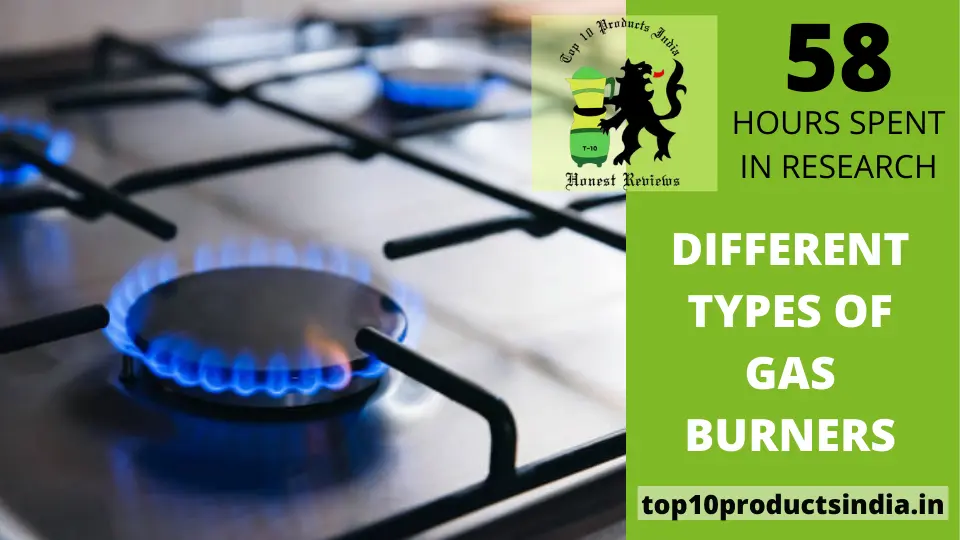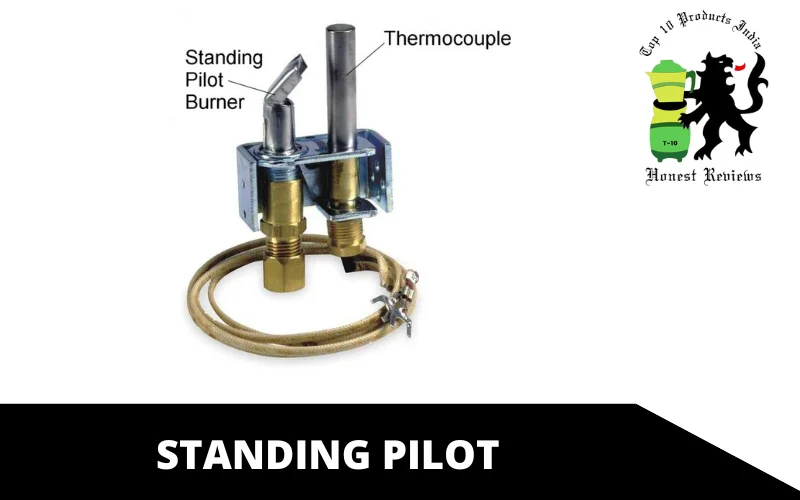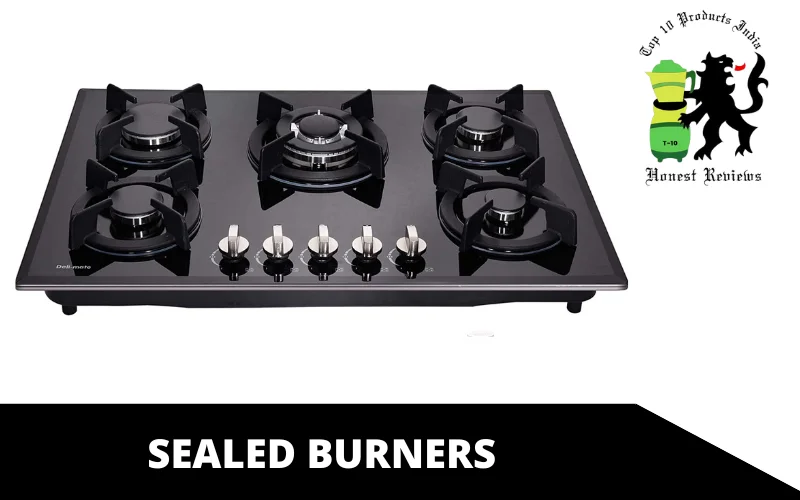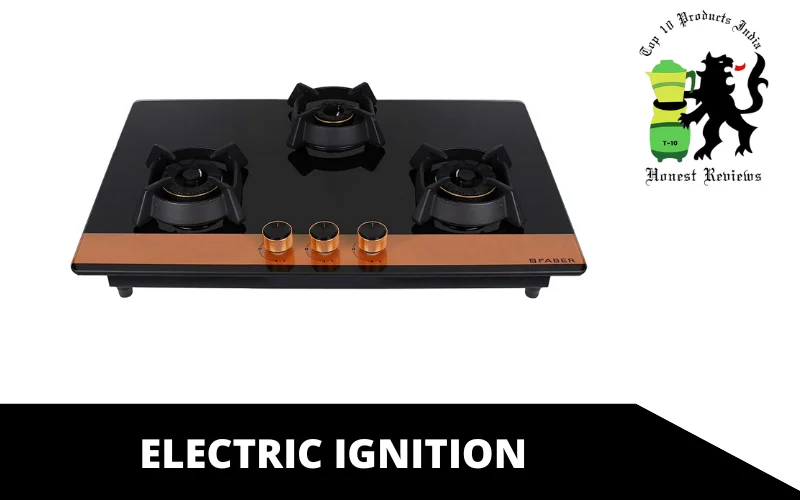Gas burners are essential to many industrial processes and everyday household activities, such as cooking and heating. They provide an efficient and reliable source of heat that can be easily controlled to suit various applications.
Various types of gas burners are available, each with unique features and benefits. Choosing the right type can significantly impact the process’s efficiency, cost-effectiveness, and safety.
In this blog, we will discuss the different types of gas burners, their benefits, and their uses to help you decide when selecting a gas burner for your specific needs.
1). Standing Pilot
A standing pilot gas burner is a type of gas burner that uses a constantly burning flame to ignite the gas when the burner is turned on.
The pilot flame is a small, steady flame located near the burner and always on, even when the burner is not in use. When the gas valve is opened, gas flows through the burner, and the pilot flame ignites the gas, creating a larger flame that produces heat.
Standing pilot gas burners are commonly used in older furnaces, water heaters, and commercial cooking equipment. They are known for their reliability and simplicity, as they require very little maintenance and can continue operating even in a power outage.
However, they are less energy-efficient than newer ignition systems, as the pilot flame always burns and continuously consumes a small amount of gas. As a result, many newer gas appliances use electronic ignition systems that only ignite the burner when needed, leading to increased energy efficiency and cost savings.
Pros & Cons:
- Reliable: A standing pilot gas burner is known for its reliability since the pilot flame is always burning. It is less likely to fail due to power outages or other issues, which can be critical in applications requiring a constant heat source.
- Simple: The design of a standing pilot gas burner is relatively simple, making it easy to operate and maintain. Fewer components are involved, and they can be repaired quickly if needed.
- Safer: The constant presence of the pilot flame makes detecting gas leaks easier. If the pilot flame goes out, it indicates a gas leak or some other issue, and the system can be shut down until the problem is resolved.
- Energy-inefficient: A standing pilot gas burner constantly consumes a small amount of gas to keep the pilot flame burning, even when the burner is not in use. This makes it less energy-efficient than newer ignition systems, which only consume gas when you turn on the burner.
- Higher operating cost: The continuous gas consumption by the pilot flame leads to higher operating costs, which can be a concern for those looking to minimize energy consumption.
- Maintenance: Although a standing pilot gas burner is relatively simple, it still requires regular maintenance to ensure it functions correctly. The pilot flame and other components must be cleaned periodically, and the system should be inspected for leaks and other issues.
2). Sealed Burners
Sealed burners are gas burners commonly found in modern gas cooktops and ranges. They are designed to create a barrier between the flame and the cooktop’s surface, which helps prevent spills, drips, and other debris from getting into the burner and causing damage or hindering its performance.
Sealed burners typically have a solid base that encases the burner elements, and the base is sealed to the cooktop surface. One of the primary benefits of sealed burners is their ease of cleaning.
Since the burner elements are enclosed, any spills or debris are contained on the cooktop surface and can be easily wiped away without disassembling or cleaning individual burner parts.
This feature also helps prevent grease and other food particles from building up around the burner, reducing the fire risk and making the cooktop safer to use.
Sealed burners are also more efficient than traditional open burners since they provide better heat distribution and retention. The sealed base helps trap heat, meaning less heat is lost to the surrounding air, resulting in faster and more even cooking. This can lead to better cooking results and reduced cooking times.
However, one potential downside of sealed burners is that they may be more difficult to repair or replace than traditional open burners since they are more complex in design. Additionally, they may be more expensive to purchase upfront than traditional open burners.
Pros & Cons:
- Easy to clean: Sealed burners are much easier to clean than traditional open burners since spills or debris are contained on the cooktop surface and can be easily wiped away. This feature also helps prevent the buildup of grease and food particles around the burner, making the cooktop safer.
- Better heat distribution: A sealed burner’s sealed base helps trap heat, resulting in faster and more even cooking. This can lead to better cooking results and reduced cooking times.
- More efficient: Sealed burners are generally more energy-efficient than traditional open burners since they provide better heat distribution and retention, resulting in less heat loss to the surrounding air.
- More complex design: A sealed burner makes it more complex than traditional open burners, making it more challenging to repair or replace if something goes wrong.
- Higher cost: Sealed burners are more expensive to purchase upfront than traditional open burners due to their more complex design and advanced features.
- Less visible flame: Some users prefer the visible flame of traditional open burners, as it can help them monitor the heat level more easily. Sealed burners, however, may have a less visible flame due to their enclosed design.
3). Electric Ignition
Electric ignition burners are common in modern gas cooktops and ranges. Instead of using a standing pilot flame to ignite the gas, electric ignition burners use an electronic spark or a hot surface igniter to ignite the gas when the burner is turned on.
Two main types of electric ignition burners are spark ignition and hot surface ignition. Spark ignition burners use an electrode to generate an electric spark, which ignites the gas when the burner is turned on. On the other hand, hot surface ignition burners use a heating element that becomes red-hot when electricity is applied to it. The heat from the hot surface igniter ignites the gas when the burner is turned on.
One of the primary benefits of electric ignition burners is their energy efficiency. Unlike standing pilot burners, which continuously use a small amount of gas to keep the pilot flame burning, electric ignition burners only consume gas when the burner is turned on. This can lead to significant energy savings over time.
Electric ignition burners are also more reliable and safer than standing pilot burners since there is no constant pilot flame. This reduces the risk of gas leaks and other issues, making electric ignition burners popular in many homes and businesses.
However, one potential downside of electric ignition burners is that they may be more challenging to repair or replace than standing pilot burners, especially if the electronic ignition system is not working correctly. Additionally, they may be more expensive to purchase upfront than standing pilot burners.
Pros & Cons:
- Energy-efficient: Electric ignition burners consume less gas than standing pilot burners, which continuously use a small amount of gas to keep the pilot flame burning. This can lead to significant energy savings over time.
- More reliable and safer: Electric ignition burners are generally more reliable and safer than standing pilot burners since there is no constant pilot flame. This reduces the risk of gas leaks and other issues, making electric ignition burners popular in many homes and businesses.
- Easier to use: Electric ignition burners are generally easier than standing pilot burners since they don’t require manual lighting.
- More complex design: The electronic ignition system of electric ignition burners makes them more complex than standing pilot burners, making them more challenging to repair or replace if something goes wrong.
- Higher cost: Electric ignition burners are more expensive to purchase upfront than standing pilot burners due to their more advanced features and electronic ignition system.
- Potential for failure: The electronic ignition system of electric ignition burners may be prone to failure or malfunction, requiring expensive repairs or replacement.
Frequently asked questions
Can I buy a gas stove on the internet?
Look for the most effective gas stoves in India. You'll be able to find different gas stove types and their descriptions and reviews to help you choose easily. Gas burners come in various forms and can be employed according to the customer's requirements. Some might prefer the standing type of pilot as it has been in use for a long time, while others choose to go with the modern electric models. The gas burners that are sealed have received fantastic reviews nowadays. We hope you have learned about this article's different gas burner types and their uses and benefits.
What is the most efficient gas stove to get the best performance?
Gas stoves are equipped with various gas burners- two burners, 3 burners, and four or more. The more burners, the greater space it'll require. You should select gas stoves based on the space that your kitchen is giving you.
Should I buy an electric stove with brass burners or one with aluminum burners?
Gas stoves allow you to select between two kinds: industrial-grade gas stoves. The most suitable choice is brass burners because they possess the highest degree of thermal energy efficiency and help save on fuel.
How often do gas pipes require to be replaced?
However, the new gas pipe may be ensured it's been installed correctly, and there is no risk of leakage. Verify any leaks to avoid fatal or hazardous accidents.
Are you important to have ISI markings on your stove's gas burner?
ISI is the acronym for Indian Standards Institution. In the ISI program, the manufactured products are subject to all safety inspections and are designed under safety standards. Therefore, ISI-marked products are safer and highly recommended.








